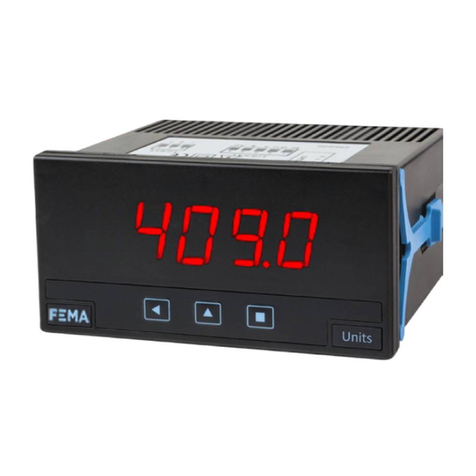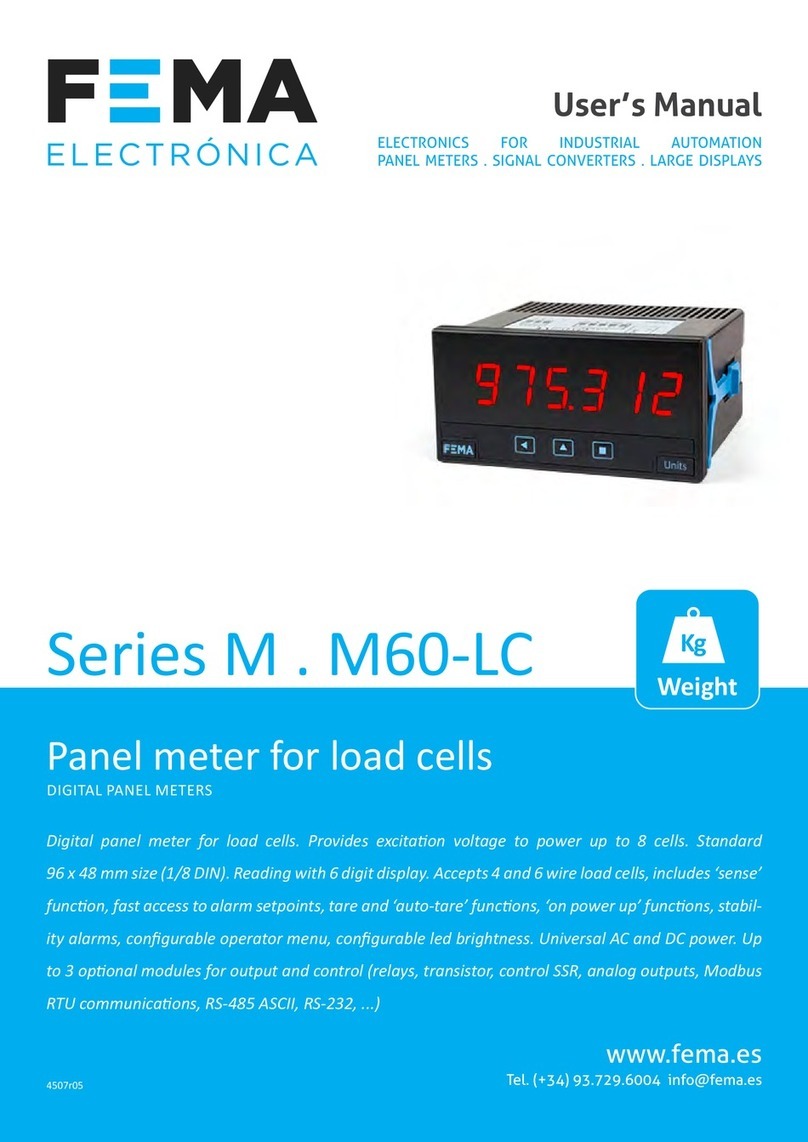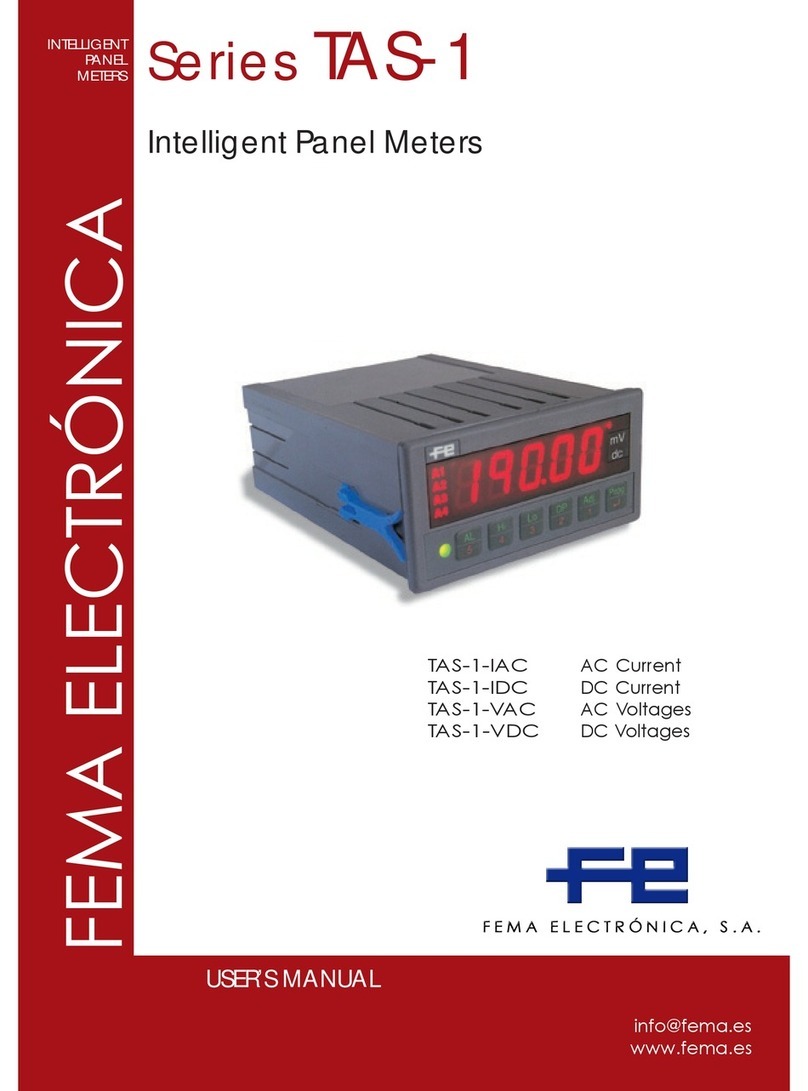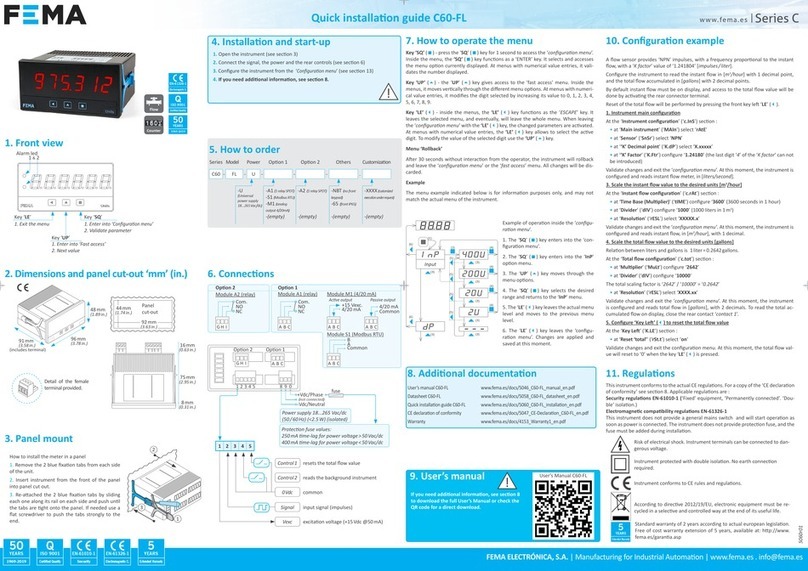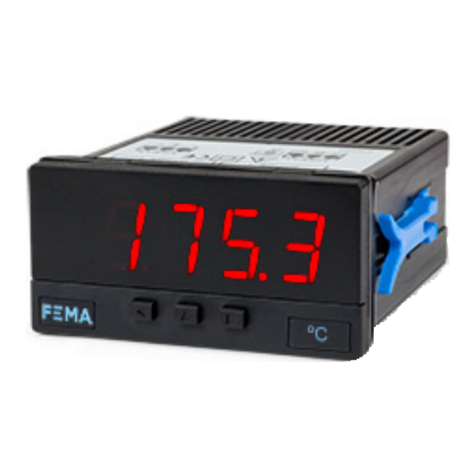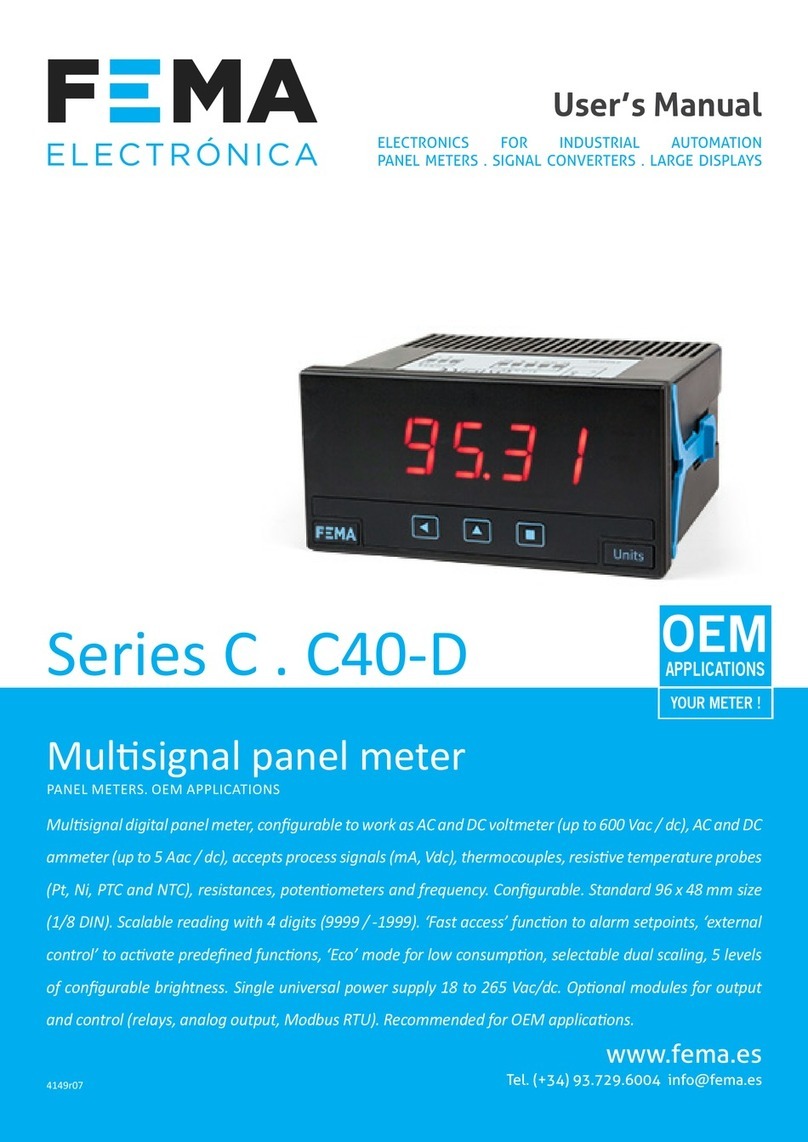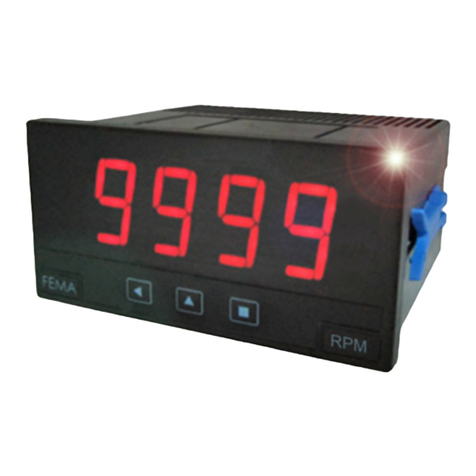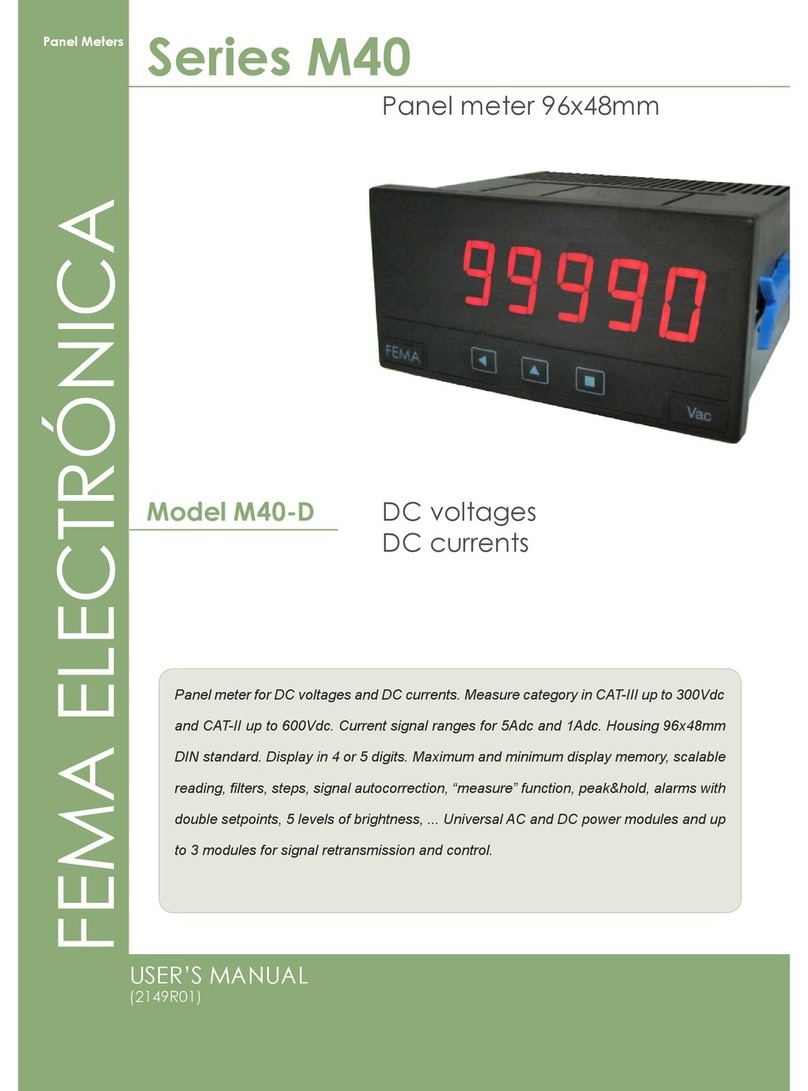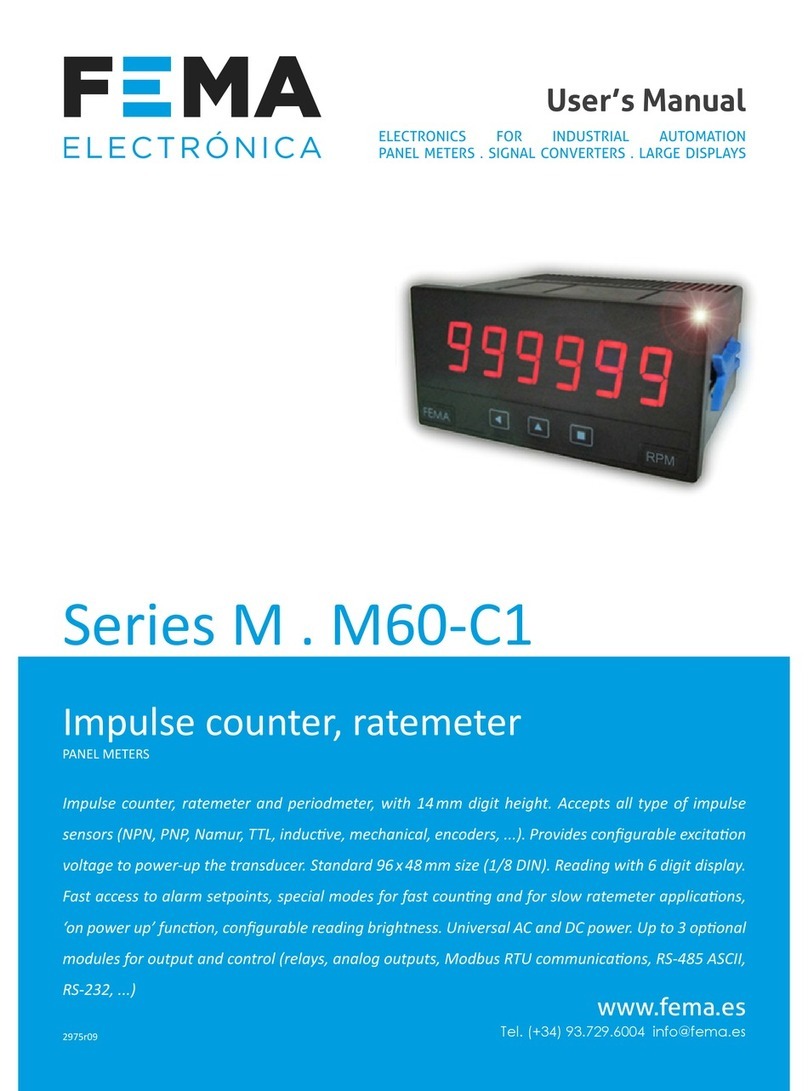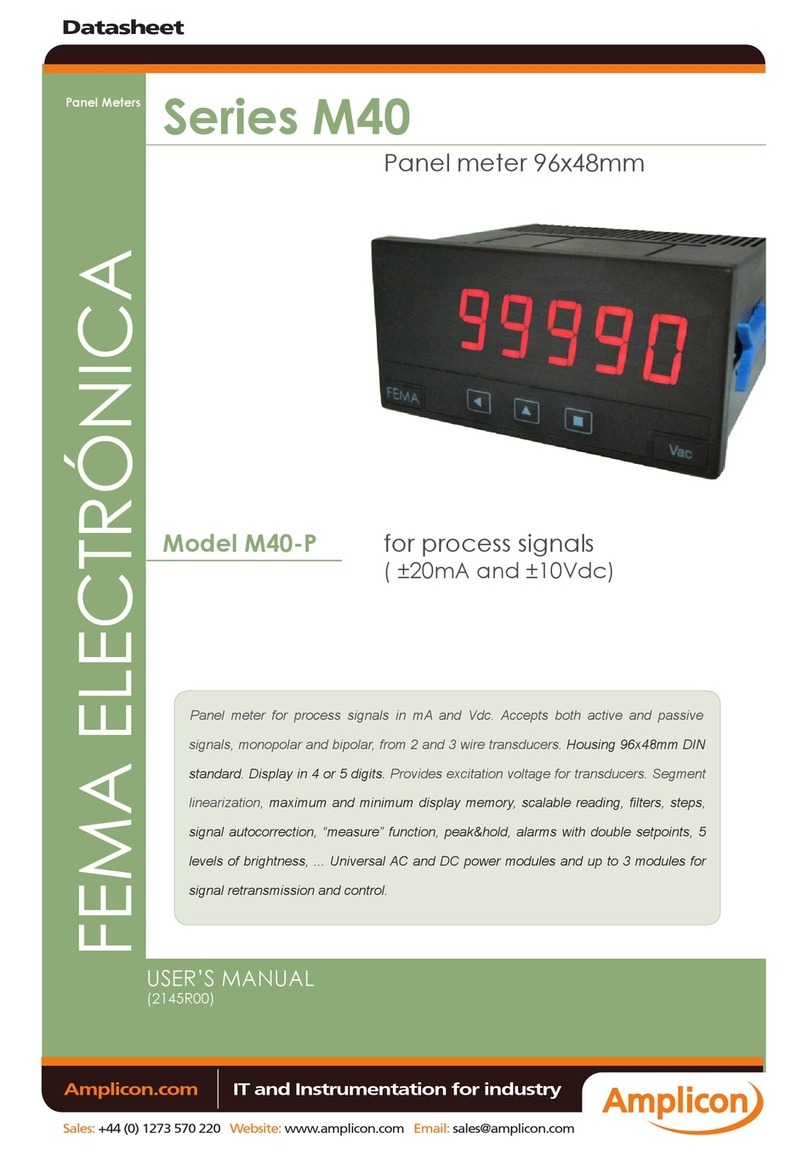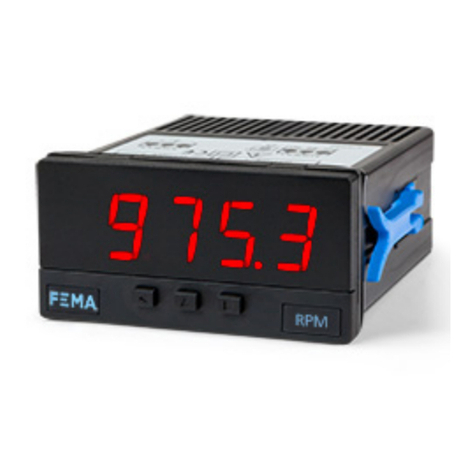
SERIES I3 · Model I3D
Section OEM . ISOLATED SIGNAL CONVERTERS
www.fema.es 9
11. Precautions on installation
This instrument is warranted against all manufacturing defects for a
period of 36 months, as requested by the European legislation. This
warranty does not apply in case of misuse or accident, and the scope
of the warranty is limited to repair of the instrument, not being the
manufacturer responsible for additional damages or additional costs.
Within the warranty period and after examination by the manufacturer,
the unit will be repaired or substituted when found to be defective.
Extended warranty available at (see section 4).
12. Warranty
Displayed code [10]
Input signal 4/20 mA
Output signal 1 4/20 mA
Output signal 2 4/20 mA
Password code disabled [00]
Working mode mode 1 [01]
This instrument has been designed and veried conforming to the
61010-1 CE Security Regulation, for industrial applications. Installation
of this instrument must be performed by qualied personnel only. This
manual contains the appropriate information for the installation. Using
the instrument in ways not specied by the manufacturer may lead to a
reduction of the specied protection level. Disconnect the instrument
from all external circuits before starting any maintenance and / or
installation action.
The instrument does not have a general switch and will start operation
as soon as power is connected. The instrument does not have protection
fuse, the fuse must be added during installation.
The instrument is designed to be DIN rail mounted, inside a cabinet,
protected from direct impacts. An appropriate ventilation of the
instrument must be assured. Do not expose the instrument to excess of
humidity. Maintain clean by using a humid rag and do NOT use abrasive
products such as alcohols, solvents, etc. General recommendations for
electrical installations apply, and for proper functionality we recommend
: if possible, install the instrument far from electrical noise or magnetic
eld generators such as power relays, electrical motors, speed variators,
... If possible, do not install along the same conduits power cables
(power, motor controllers, electrovalves, ...) together with signal and/
or control cables. Before proceeding to the power connection, verify
that the voltage level available matches the power levels indicated in
the label on the instrument. In case of re, disconnect the instrument
from the power line, re alarm according to local rules, disconnect the air
conditioning, attack re with carbonic snow, never with water.
Risk of electrical shock. Instrument terminals can be
connected to dangerous voltage.
Instrument protected with double isolation. No earth
connection required.
Instrument conforms to CE rules and regulations.
Conformity with security regulations EN-61010-1 requires that
the front cover is closed. The input terminal prevents the front
cover from opening.
13. Factory default parameters
Manufacturer FEMA ELECTRÓNICA, S.A.
Altimira 14 - Pol. Ind. Santiga
E08210 - Barberà del Vallès
BARCELONA - SPAIN
www.fema.es - info@fema.es
Products I3D
The manufacturer declares that the instruments indicated comply with the
directives and rules indicated below.
Electromagnetic compatibility directive 2014/30/EU
Low voltage directive 2014/35/EU
ROHS directive 2015/863/EU
WEEE directive 2012/19/EU
Security rules EN-61010-1
Instrument Fixed, Permanently connected
Pollution degree 1 and 2 (without condensation)
Isolation Double
Overvoltage category 2
Electromagnetic compatibility rules EN-61326-1
EM environment
Industrial
CISPR 11 Instrument Class A & Class B Group 1
For a detailed declaration see section 4.
Barberà del Vallès, October 2022
Xavier Juncà - Product Manager
According to directive 2012/19/EU, electronic equipment
must be recycled in a selective and controlled way at the
end of its useful life.
14. CE declaration of conformity
RESET TO DEFAULT FACTORY PARAMETERS
To recover the instrument to default factory parameters, select code ‘16’
and activate value ‘01’.
• access the ‘conguration mode’
• access code ‘16’ and press key ‘SQ’ (<)
• the ‘conguration digits’ show code ‘00’ ashing
• press key ‘UP’ (5) to change to value ‘01’
• press key ‘SQ’ (<)
• the leds light a round shape while the new conguration is stored, and
the instrument returns to ‘normal mode’ of operation
• the ‘conguration digits’ show code ‘10’ and the default factory
conguration is now active
FIRMWARE VERSION
The instrument ‘rmware’ version is an alphanumerical code from ‘00’ to
‘FF’, accessible through conguration code ‘17’.












